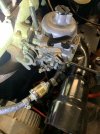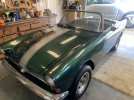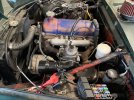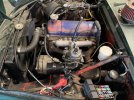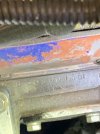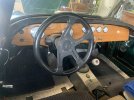sunny67
Silver Level Sponsor
I have a 67 Alpine that’s pretty much stock for everything but the motor. The PO installed a later model 1.7 Sunbeam motor with a single carb (yep, it’s a dog). The carb has a choke or cold start attachment. See photo. Gasoline will leak out the choke when I turn on the electric fuel pump. When I remove the choke mechanism from the carb body, there’s no leak. The float level seems to be correct based on what I read and I tried two different float needle valves.
I believe I have the choke disk positioned correctly but not absolutely sure. A photo of the orientation of the choke disk’s 4 holes vs the slot would also be helpful.
Any ideas on my leak? I’m stumped.
I believe I have the choke disk positioned correctly but not absolutely sure. A photo of the orientation of the choke disk’s 4 holes vs the slot would also be helpful.
Any ideas on my leak? I’m stumped.

